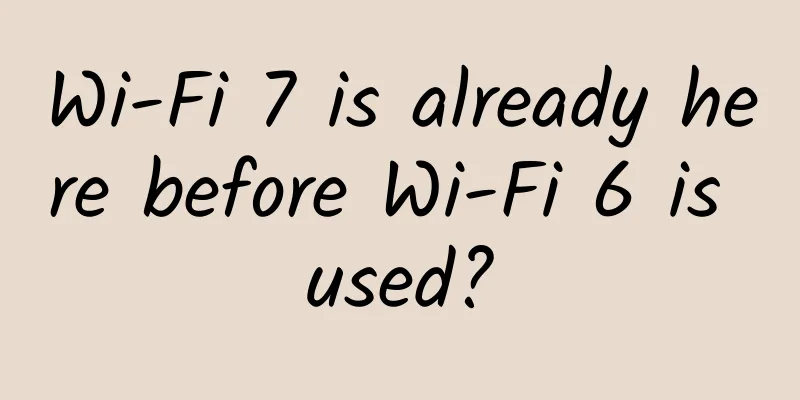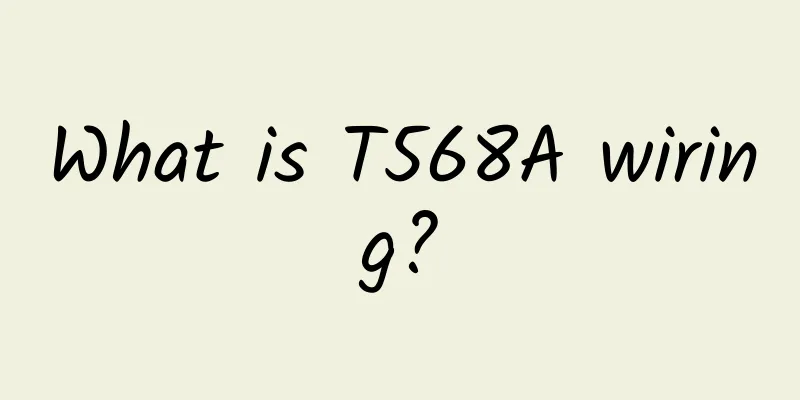Why is millimeter wave the only way to the 5G era?

|
According to the 3GPP agreement, 5G networks will mainly use two frequency bands in the future - FR1 and FR2. The FR1 band ranges from 450MHz to 6GHz, which we usually call the sub-6GHz band; while the FR2 band is concentrated between 24.25GHz and 52.6GHz, which is generally called "millimeter wave". The industry is already very familiar with the frequency band below 6GHz. In fact, current LTE networks all operate in the frequency band below 6GHz, and the development of human mobile Internet has long been based on this. However, millimeter wave is a strange term for many people. But no matter from which aspect, if we want to realize the envisioned 5G interconnection era, the advancement of millimeter wave technology will be the key. (Millimeter wave will be the only way for 5G development) Millimeter wave was once a wild place, but now it is an ideal bridge to 5G In the 30 years of mobile communication development, millimeter waves have always been an uncultivated wilderness. Although laboratories of communication giants such as Qualcomm and Ericsson have continued to invest in research, millimeter waves have not really entered our lives, which is also the result of the market and technology. First of all, in the past, humans did not have high requirements for the bandwidth of mobile communications. In the era when fiber optic transmission was only 512K or even lower, the high bandwidth provided by millimeter wave technology gave priority to the practicality of equipment, and the narrow bandwidth below 6GHz was sufficient to meet the demand. At the same time, due to the high frequency characteristics of millimeter wave technology, the propagation distance of millimeter waves itself is shorter than that of low-frequency bands, and operators often need to invest more costs to achieve large-scale coverage. Therefore, in the era when spectrum resources are not yet tight, millimeter waves are naturally not the only option for use. (5G networks will operate in the 6GHz and millimeter wave frequency bands) In addition, the integrated circuits supporting millimeter waves have always been more expensive to invest in, and they have to overcome more environmental factors. Operators often consider cost factors and coverage return value when building basic networks. Until a milestone event in 2017, Qualcomm proved the feasibility of deploying millimeter waves between cities through a series of actual landing experiments. But before that, it was almost impossible to get operators and terminal manufacturers to support millimeter wave technology. But all this has changed with the arrival of 5G. Compared with the frequency bands below 6GHz used by LTE, the inherent technical advantages of millimeter waves make it impossible to refuse. In terms of bandwidth, the upper limit of LTE available bandwidth below the 6GHz band is only 100MHz, which means that the data rate can only meet the maximum downlink of 1Gbps. However, the upper limit bandwidth of mobile applications in the millimeter wave band reaches 400MHz, and the transmission rate can reach 10Gbps or even more. In the 5G era where speed is the first priority, such bandwidth performance can meet user expectations. (5G connection scene, picture from infinecon) Secondly, the spectrum resources of millimeter waves are also more abundant. With 30 years of development, the spectrum resources within 30 GHz have almost been exhausted. LTE and broadcasting and television networks have been divided up by operators and various institutions. It will be very difficult to cultivate fertile land from them to supply 5G. Nowadays, almost all operators in the world are facing the problem of spectrum resource shortage. The conflict between LTE and 5G has become more and more obvious. Therefore, the uncultivated millimeter waves have become the "new world" of the mobile communications industry. It still has a lot of space for operators. At the same time, from a technical perspective, the "defects" of millimeter waves can now become advantages. You should know that the higher the frequency band, the lower the size requirement for the receiving antenna. This means that for terminals that support millimeter waves, the receiving antenna inside the body can be made smaller than before, and for terminals without size restrictions, more high-frequency band antennas can be accommodated on the original technology, thereby obtaining better reception effects. More importantly, since the propagation distance of millimeter waves is shorter than that of frequencies below 6GHz, its directivity will be more advantageous in the entire propagation path, which makes the possibility of interference between millimeter wave signals smaller and improves the accuracy of propagation. In addition, since the propagation distance of narrow beams is short, the possibility of them being intercepted at a long distance will become lower, which also has an incomparable advantage in communication security. Strictly speaking, the so-called millimeter wave (mmWave) refers more precisely to the EHF band, which is an electromagnetic wave with a frequency range of 30GHz to 300GHz. If defined by wavelength, the wavelength of 30GHz electromagnetic waves is 10mm, while the wavelength of 300GHz electromagnetic waves is only 1mm. However, according to the broadcast of the FR2 band, the wavelength of 24.25GHz is more than 10mm. Although we call it millimeter wave, many people think it should be classified as centimeter wave. However, since no organization in the world has given a clear definition of millimeter waves, it is harmless to count the FR2 band as millimeter waves from the perspective of the broadly recognized boundaries. It can be said that millimeter waves were once a wild land, but now they are our bridge to the ideal of 5G. Millimeter wave is no longer a paper technology, it is becoming a "reality" There is no doubt that with the advent of 5G commercialization, millimeter wave is no longer just a paper technology, but has long been a real and practical reality. Among them, Qualcomm's contribution to the development of millimeter wave technology must be mentioned. In fact, since the 1990s, Qualcomm has been committed to the research and development of emerging mobile communication technologies, and millimeter wave is one of the many technologies in the technological advancement. However, like all technological advancements, the commercialization of millimeter wave technology has taken nearly 30 years of hard work. As mentioned above, it not only needs to overcome the weakness of high-frequency signals to shielding, but also needs to provide terminal manufacturers and operators with a set of practical and available solutions. Qualcomm has become a communication solution provider that can achieve these two points. At the 2016 Mobile World Congress in Barcelona, the American company showed the world a non-line-of-sight millimeter wave mobility experiment supported by beam steering. In the test, the 5G adaptive beamforming and beam tracking technology based on millimeter wave technology can provide robust mobile broadband communications in real environments. This means that the chains that have previously shackled the commercial use of millimeter waves in the mobile communications industry have finally been broken. Subsequently, a series of commercial experiments have also proved that even if the test equipment is in a mobile state or in an environment with dense walls, the terminal itself can still achieve rapid signal switching between multiple base stations. (After a lot of testing, Qualcomm finally broke the chains that had previously shackled the commercial use of millimeter waves in the mobile communications industry) At the same time, for terminal manufacturers, the landing of millimeter wave has also entered the countdown at the same time. Because in October 2016, the X50 5G modem was officially launched. This is the industry's first 5G chip that fully provides millimeter wave and sub-6GHz links. Its appearance has accelerated the industry's testing speed for commercial use of 5G networks and further promoted the pace of overall 5G development. The biggest objection to millimeter waves is that high-frequency signals have a short transmission distance and are easily affected by objects, so a large number of small base stations are needed to improve signal coverage. This is not advisable for most operators because it will bring foreseeable cost issues. Deploying more base stations means that mobile operators need more time and investment to recover costs. But Qualcomm doesn't think so. In its view, the high coverage of millimeter wave technology itself will help operators further reduce costs. In fact, as early as 2017, Qualcomm has proved the feasibility of large-scale coverage of millimeter wave in modern urban environments through simulation experiments. In the experiment, San Francisco achieved 65% downlink connection coverage in an area of 10 square kilometers. Since the base station itself is deployed together with the LTE base station, its coverage rate in densely populated urban areas is as high as 80%. At the same time, since the high frequency band of 28GHz provides more bandwidth, it saves a lot of spectrum resources for LTE networks below 6GHz, so that smartphones and devices will have better network conditions in indoor environments. (The world's first millimeter wave 5G antenna module QTM052 for mobile terminals) At the same time, the promotion of millimeter waves is also happening on terminals. Qualcomm has currently released several miniaturized 5G new air interface RF modules that can be used in smartphones. In addition to supporting 6GHz, they can also provide support for millimeter waves. This means that smart terminal manufacturers can achieve support for millimeter waves when using solutions based on Qualcomm Snapdragon 855 mobile platform and X50 5G modem, combined with matching RF modules. We believe that 5G technology is like the steam engine of this era. It will once again promote the progress of all industries and will change the industrial field and the lives of ordinary people. At a time when spectrum resources are further squeezed, millimeter wave technology will eventually take the stage of history and take on the responsibility of providing better quality networks. |
<<: What is Layer 4 and Layer 7 load balancing? What is the difference between them?
>>: Let you know the more common Wi-Fi standards and types
Recommend
We haven’t experienced 5G yet, but 6G is coming?
The latest 6G speed created by Chinese scientists...
What is Single Pair Ethernet (SPE) and how is it used in industrial applications?
[[416579]] Single-pair Ethernet was originally de...
Why do many colleagues recommend Ether IPL? Until this hospital expansion...
By Jin Gang, Chief of Information Department, Thi...
What are the differences between Bare Metal switches, White Box switches, and Brite Box switches?
In today's era of increasingly dynamic IT env...
V5.NET is 30% off in July, and monthly payment starts from HK$525 for new Korean servers
V5.NET has launched new products. This month, the...
Intellectual Property Day | The global 5G patent contribution map has been determined, and the 6G patent race has started
"Knowledge is power." Intellectual prop...
Friendhosting 14th Anniversary 30% off all VPS, 11 data centers to choose from, unlimited traffic VPS
Friendhosting has released a promotional offer fo...
What will be the consequences if all three major operators upgrade to 5G in five years?
Seeing that domestic communication companies are ...
How much do you know about the TCP three-way handshake principle?
I recently encountered a problem where the client...
5G development is gradually spreading like wildfire, and China is expected to take the lead
5G is a new generation of communication technolog...
15,000 Stars! Programmer's "Internet Swiss Army Knife"!
Introduction CyberChef is a web application for e...
KVMLA: 60 yuan/month KVM-2GB/30GB/600GB/Japan & Hong Kong & Singapore data centers
KVMLA is a long-established Chinese business foun...
GigsGigsCloud: $26/year KVM-1GB/15G SSD/2TB/Los Angeles Data Center
GigsGigsCloud has launched a new VPS in the Los A...
VMISS 20% off for all items, Korea/Japan/Hong Kong CN2/Los Angeles CN2 GIA/9929/CMIN2 etc. starting from 21 yuan/month
VMISS updated its promotional plan in December an...
5G and Edge AI: Solving Traffic Management Problems
The way we commute may have changed over time, bu...




![[Black Friday] HostDare: $9.89/year-768MB/15G NVMe/1TB/Los Angeles Data Center](/upload/images/67cabcf183290.webp)




